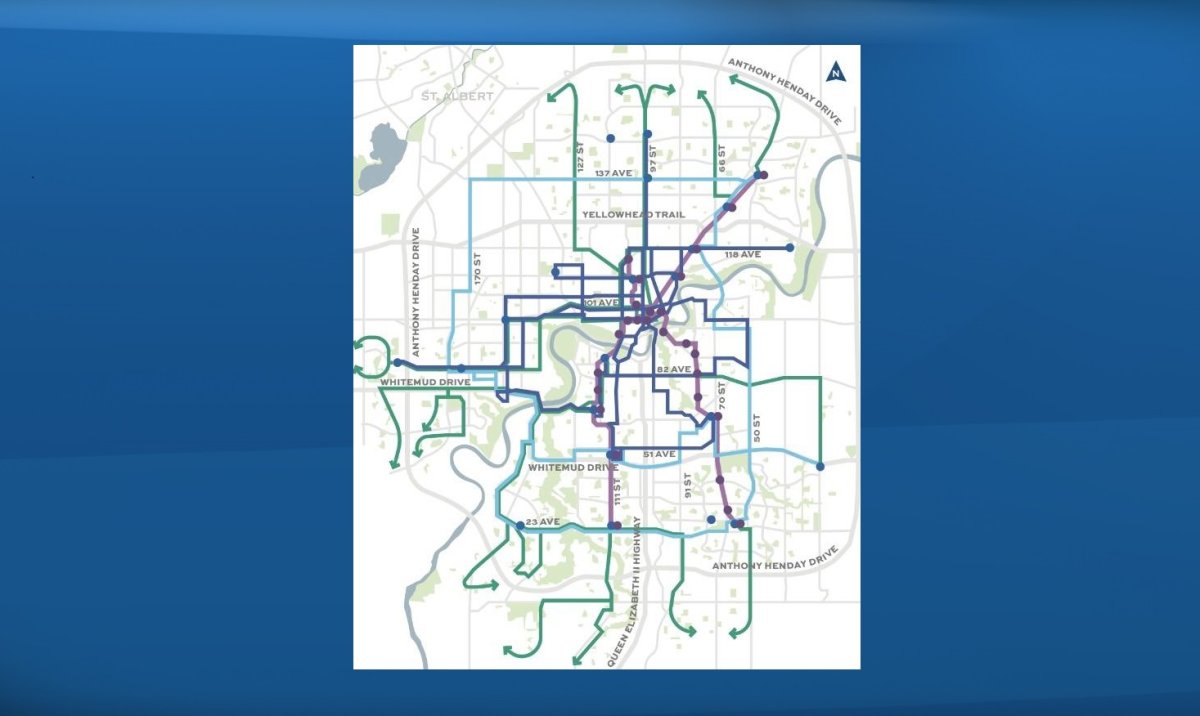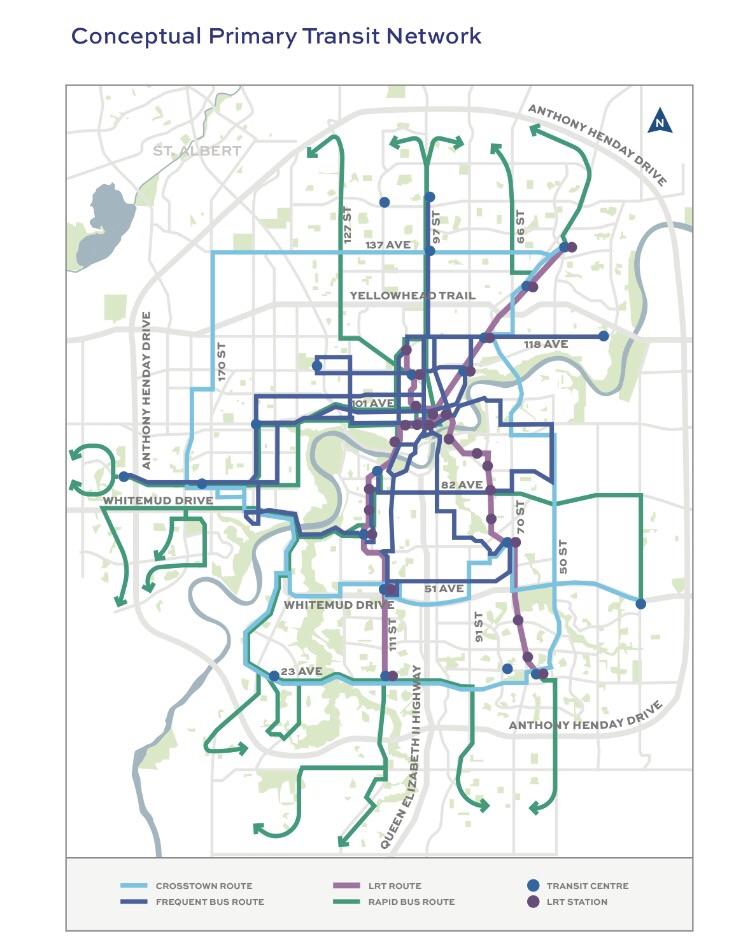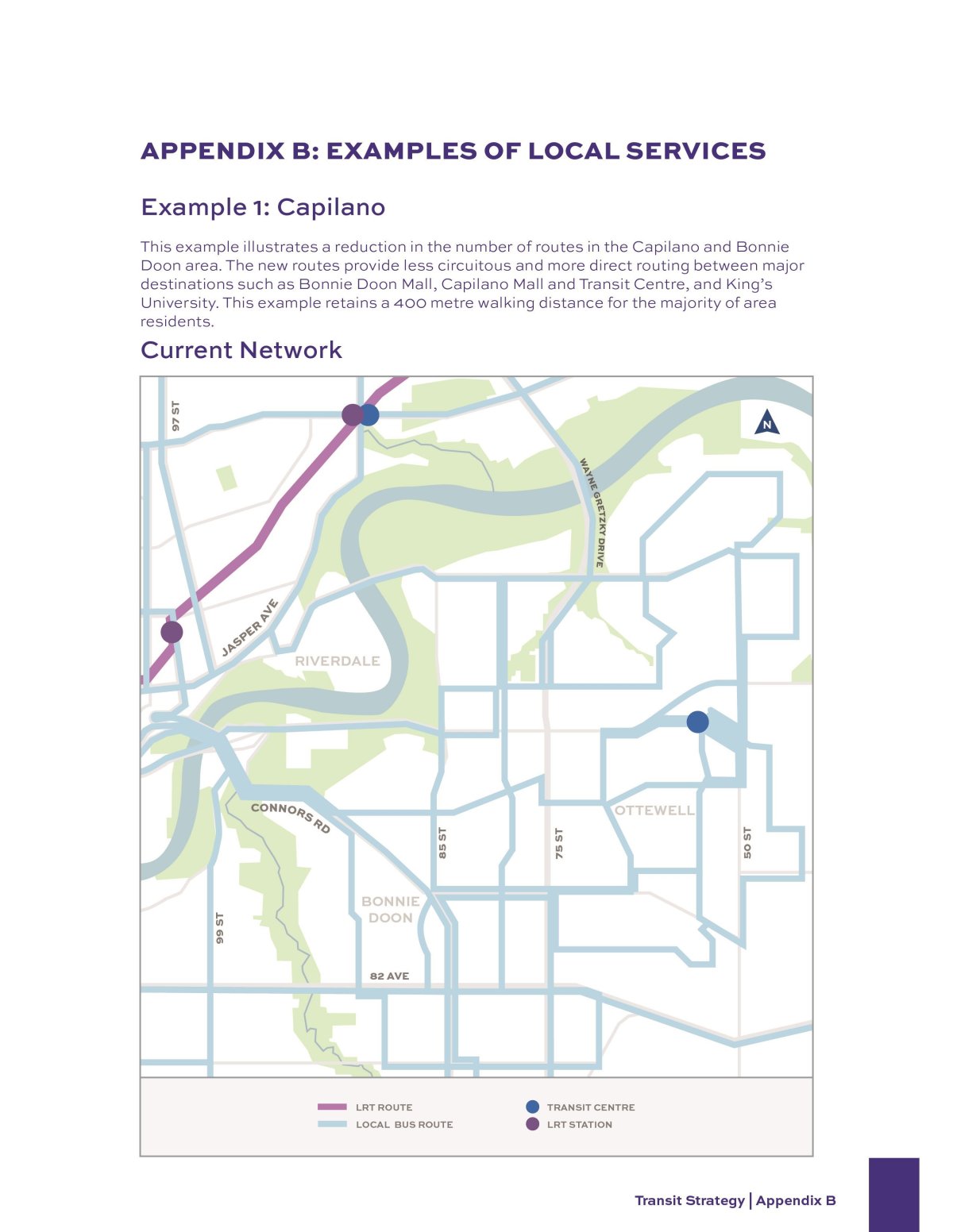The City of Edmonton has released a high-level plan to change how it offers transit, with a shift from service spread equally across the city to a model that it says better fits supply and demand.

“Our transit system can only support our city to the extent that our city supports transit,” the 85-page report says, adding it will focus on service that is “safe, fast, convenient and reliable.”
READ MORE: Combining 2 phases of south LRT extension could save Edmonton $50M
The plan features high-frequency routes closer to the city’s centre, with new crosstown routes and rapid-bus commuter routes (BRT) from the suburbs.
The plan identifies the different demands between neighbourhoods inside and outside a ring road — not Anthony Henday Drive, but rather a ring road made up of four arterials: 170 Street in the west, Whitemud Drive in the south, 75 Street in the east, and Yellowhead Trail in the north.
The plan calls for increased service inside the ring road, about a dozen express routes running between the suburbs and downtown, and fewer buses meandering through neighbourhoods. That means some transit users might have to walk farther to catch a bus.
READ MORE: Edmonton Transit says fall service shakeup yields results, more changes coming
The new crosstown service would run every 20 to 30 minutes in a big loop around the inner ring road, with an extra section farther south along 23 Avenue, to connect with the major transit centres.
The report said the inner neighbourhoods are characterized by a grid street network and a mix of residential and non-residential land uses, and where transit use is higher. Outer neighbourhoods are characterized by more circuitous street patterns and more homogeneous land uses, and where there is more reliance on automobile use.

The plan came after an extensive, two-year long public engagement campaign and is built around five “pillars” the transit strategy team has been working on for years.
READ MORE: West Edmonton Mall Transit Centre reopens after $3M renovation
Put simply, the pillars the city believes will encourage more people to choose transit are:
- Build transit-friendly neighbourhoods and places.
- Offer fare categories that are consistent and easy to understand.
- Provide service that reflects the different preferences of inner and outer neighbourhoods.
- Elevate the importance of safety.
- Keep up with trends in technology and the environment.
One of the goals is to have a “market-responsive approach to transit network design.” The city said for customers it will mean:
- Transit becomes a lifestyle option for inner area residents, due to the frequent transit network enabling spontaneous travel.
- Transit becomes a more competitive commuter option for outer areas, with greater reliability and higher operating speeds, achieved through implementation of rapid bus routes and transit priority measures.
- Local service is more direct and easier to understand, but less customized.
- Travel times while onboard transit are minimized.
- There are longer walking distances to transit stops in many areas.
- Areas of high demand receive more fixed-route transit service, while areas with low demand receive less fixed-route service.
- The impacts of this approach are partially softened through the use of local routes that connect to seniors complexes, schools and local activity centres.
- Impacts may also be mitigated by exploring options with private sector transportation services to provide new mobility choices in areas with low demand.
The report said the next step is to develop a plan to implement the changes. The full report can be read below:













Comments